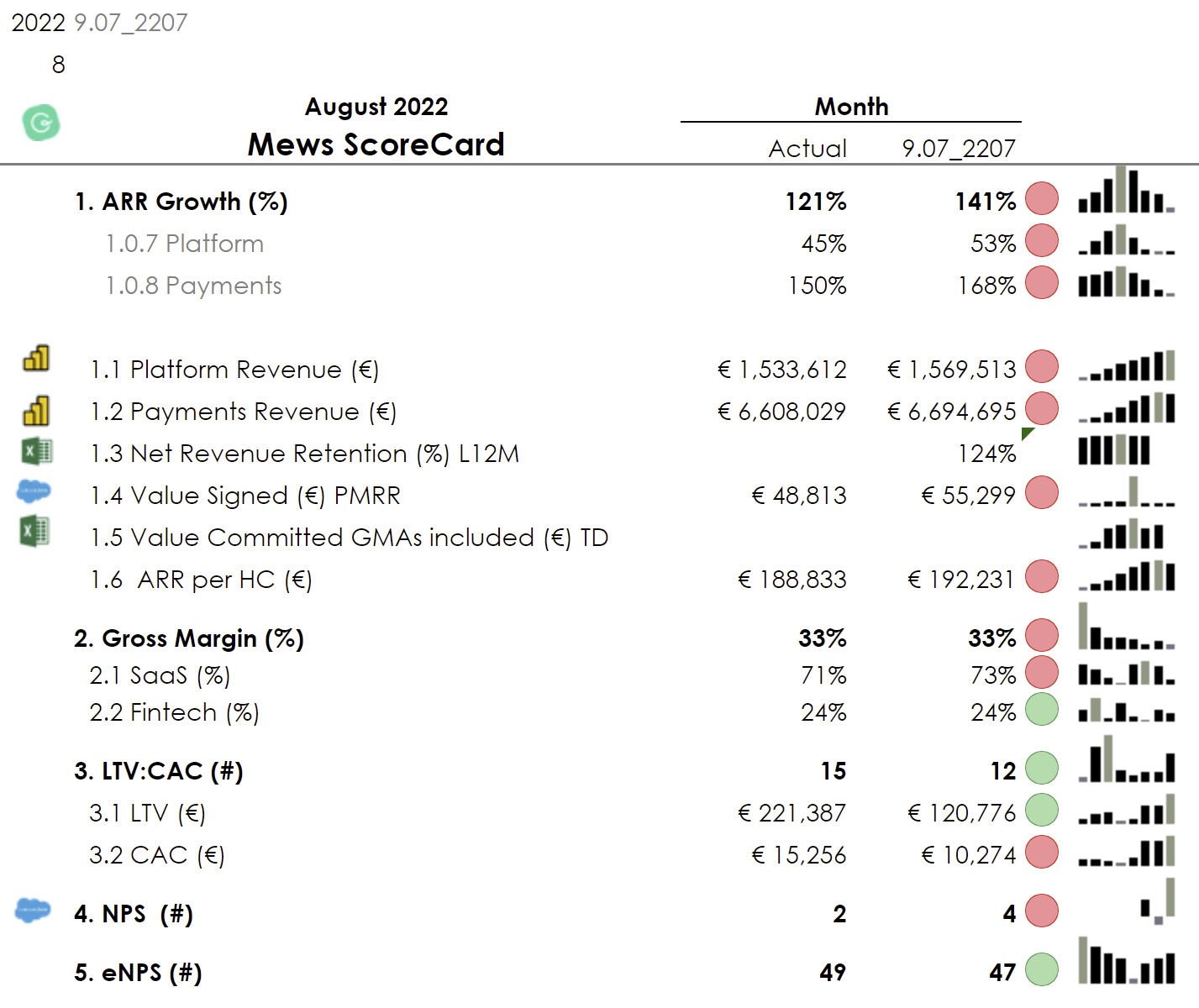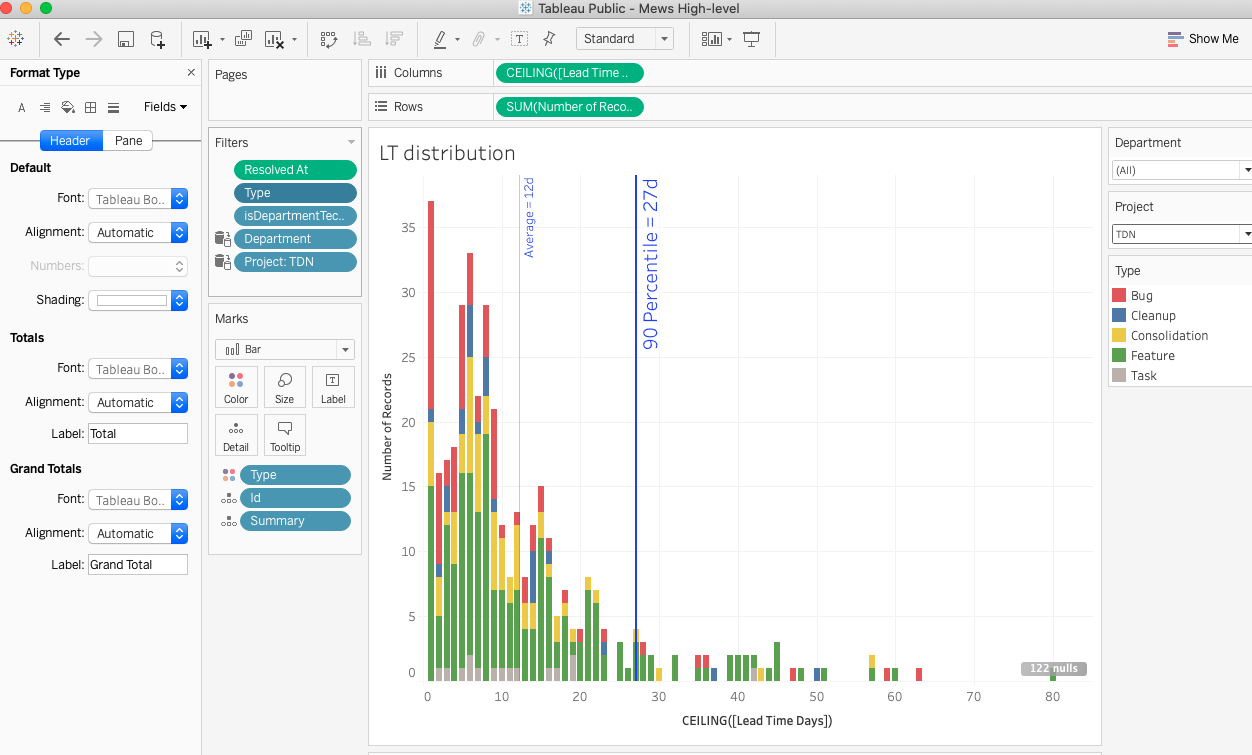Production-ready. This tool is designed to extract data from JIRA and convert it into Excel or CSV format. Automatically, it includes all essential stage (ie. in dev, in code review, in testing) duration data and enhances it with flow status and stage start dates with no further setting required. Consequently, it enables easy calculation and visualization of cycle time, lead time, and velocity.
Consequently, data is ready for further analytics and visualization in Google Sheet charts, Excel, Tableau, Looker, or Power BI.
With obtained data, we can explore/analyze team efficiency metrics
- DORA metrics: lead time or cycle time, deployment frequency, mean time to recover, change failure rate
- Investment allocation and roadmap contribution by labels or epic links
- Number of backtracks
- Sprint completion
- Throughput and Velocity
| Teams Efficiency dashboards - Real case studies | Teams Efficiency rating |
|---|---|
 |
 |
 |
 |
 |
 |
 |
 |
See an example of a generated output file in examples/output.csv.
Spread between development, code review, testing, validation and deployment.

What is our median cycle time, how many issues we deliver on daily basis, 90th percentile delivery, and outliers.

There are two options for running this extract utility: either as a standalone exectuable or as a nodejs app.
- Download and install the Node.js app from https://nodejs.org/en/download
- Download the latest "SourceCode.zip" from releases and unpack the whole zip. You should have a "run.js" and "config.yaml" files in the same directory.
- Edit the config.yaml file and customize it for your specific Jira instance according to the instructions in this README below.
- Open a command prompt, move to the directory where both "run.js" and "config.yaml" files are located and run it by simply typing
node run.js - If you receive an
Error: Invalid URIerror, make sure you define the right Jira config parameters in the config.yaml file. - If the program succeeds, the output data file will be written in the same directory as the executable file.
-
Install git from https://git-scm.com/book/en/v2/Getting-Started-Installing-Git
-
Clone the project using git to your local device using command
git clone https://github.com/marian-kamenistak/jira-lead-cycle-time-duration-extractor.git -
install npm tool from https://nodejs.org/en/download
-
in the project folder, install all the dependent packages using command
npm install npm run buildconfigure the config.yaml file for your connection
npm run extract
These flags are the same whether you are using the standalone executable or node form of the extraction tool.
-i specifies input config file name (defaults to config.yaml)
-u specifies the username for the connection to Jira (by default the username in the config.yaml is used)
-p specifies the password for the connection to Jira (by default the password in the config.yaml is used)
npm cache clean -f
npm install -g n
n stable
Edit config.yaml file
The config file we use conforms to the YAML format standard (https://yaml.org/spec/) and is completely case sensitive. You can find an example config file here: config.yaml. Feel free to follow along with that example as we run through the details of each section of the file.
Connection:
Domain: https://<your jira domain>/ Open Jira in your browser and see the domain name in the browser link.
Username: <email> Use an email you use to access Jira.
Password: <Jira API token> is your Jira API Token. The token can be generated at https://id.atlassian.com/manage-profile/security/api-tokens
in your console, run:
curl -v https://<yourdomain>.atlassian.net/ --user <email>:<Jira API token>
is driven by a JQL statement. Examples:
JQL:
Query: created >= -30d order by created DESC
Query: key=EPM-197
Query: project in ("Team A", "Team B")
To create the right JQL query, open Jira -> Filter -> 'Advanced issue search' and build the query.
The Attributes Section of the config file is simply named "Attributes" (without the quotes) and is another optional section that includes name-value pairs that you want included in your extracted data set. They may be Jira custom fields that are unique to your Jira instance, or certain standard Jira fields that we support. Each line in this section contains the name you want to appear as the attribute column name in the CSV file, followed by a colon, followed by the name of a Jira custom field or a supported standard field, like this:
Here are the standard Jira fields that you can use:
Attributes:
Stage: status.name
StatusCategory: status.statusCategory.name
Level: priority.name
Labels: labels
Components: components.name
Version: fixVersions.last.name
VersionRelease: fixVersions.last.releaseDate
ParentId: parent.key
ParentName: parent.fields.summary
ParentType: parent.fields.issuetype.name
Timeoriginalestimate: timeoriginalestimate
Sprint: customfield_10105.last.name
Priority: priority.name
Project: project.name
#Service: customfield_18801.value
#Account: customfield_20397.value
Timeoriginalestimate: timeoriginalestimate
Timeestimate: timeestimate
Timespent: timespent
AggreagateTimeoriginalestimate: aggregatetimeoriginalestimate
AggreagateTimeestimate: aggregatetimeestimate
AggreagateTimespent: aggregatetimespent
Workratio: workratio
In order to add more of your custom parameters, see what other data fields an issue contains. You can use
curl --request GET \
--url 'https://your-domain.atlassian.net/rest/api/3/issue/{issueIdOrKey}' \
--user '[email protected]:<api_token>' \
--header 'Accept: application/json'
For more information about Jira fields and the structure, see Jira doc: Jira API doc: https://developer.atlassian.com/cloud/jira/platform/rest/v3/api-group-issue-fields/#api-group-issue-fields
{
"version": "0.2.0",
"configurations": [
{
"type": "node",
"request": "launch",
"name": "Launch Program",
"skipFiles": [
"<node_internals>/**"
],
"program": "${workspaceFolder}/dist/cli.js",
"args": [
"-i", "<config dir>/config.yaml"
]
}
]
}
- npm run deploy
- commit run.js
- https://github.com/marian-kamenistak/jira-lead-cycle-time-duration-extractor/releases -> Draft new release
- with anew label
- set as latest release
Marian Kamenistak - 🚀 Building Silicon Valley in Central Europe « 🎓 Founder and Chief Coach at Engineering Leaders Community « 💰 $200M+ Series A-D Fractional VP Engineering « Lecturer/Moderator/Speaker
Engineering Leaders Community to grow Engineering Managers in Software companies, and Engineering Leaders Hub: Our mission is to create a mini Silicon Valley in Central Europe. We're boosting engineering productivity by elevating our Engineering Leadership talent pool.


